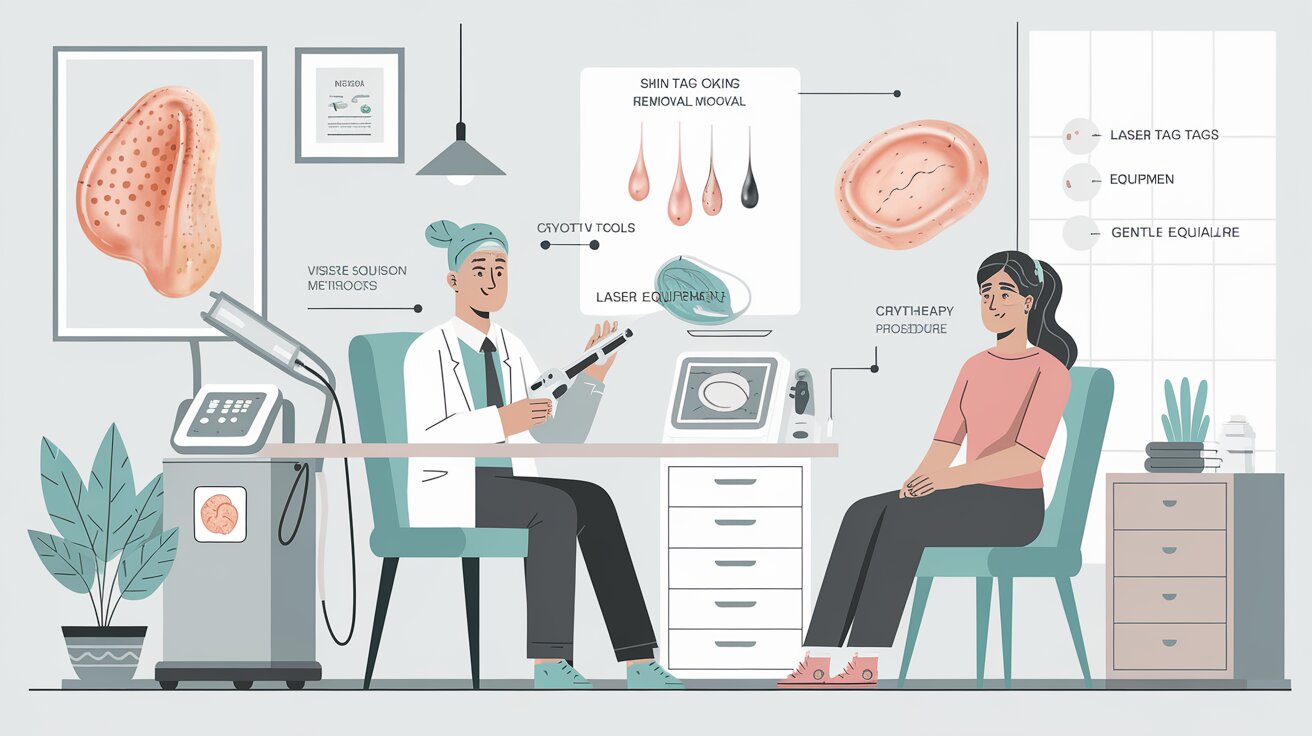
Are you noticing some skin growths around your eyelids, neck, or armpits? Those may be skin tags, and it’s best to have them removed by a professional before they grow in size and become more noticeable.
As much as it’s tempting to remove those stubborn skin growths yourself at home, doctors strongly advise doing so! This could lead to bleeding, pain, infection, and even misdiagnosis.
In this article, we’ll talk about everything you need to know about skin tags and the various skin tag removal treatments available in Singapore that you could explore.
What are skin tags?
Skin tags (medically called acrochordons) are harmless growths that hang from the skin, often appearing on the eyelids, neck, armpits, thighs, and under the breasts. Some share the same colour as the skin or darker and may appear pink or red when irritated.
The main distinction between skin tags, warts and other benign lesions is the stalk that attaches them to the skin. Skin tags hang from the skin, while warts are often flat.
Most skin tags stay small, while others grow bigger, with a diameter that often ranges from 1 to 5 millimetres.
Why do skin tags develop?
The exact cause of skin tag remains unknown, but doctors often link it to lifestyle and genetics. Loss of skin elasticity and human papillomavirus (HPV) are also believed to be associated with the formation of skin tags.
Since skin tags often develop where skin rubs against itself, health conditions such as obesity, diabetes, high blood pressure, unhealthy cholesterol levels and pregnancy contribute to the risk of skin tags.
Age is also correlated to the development of skin tags, so the older you get, the more likely you’ll get them.
While there’s no medically proven way to avoid skin tags, maintaining a healthy diet and regular exercise can reduce your chances of getting skin tags.
How does skin tag removal work?
Medically speaking, there’s no need to remove skin tags because they’re harmless – and sometimes even fall off on their own over time.
Skin tag removal in Singapore can be considered if:
- they develop on the eyelids and affect the vision
- they become irritated and bleeding happens
- they come with sudden, unexpected pain or discomfort
You can have your skin tag removed by a dermatologist or an aesthetic doctor if their size and appearance are starting to bother you. Just a friendly reminder here that your insurance won’t cover it as it’s considered a cosmetic procedure!
The different types of skin tag removal treatments in Singapore are:
- Cauterisation: the most common treatment for skin tags, involves burning the skin tag until it falls off and sealing the wound to prevent bleeding.
- Cryosurgery: involves freezing the skin tag with frozen nitrogen, causing it to fall off.
- Electrodesiccation: destroys the skin tag by zapping it with electric currents via a needle.
- Excision: the skin tag is manually cut off with sterile surgical scissors or scalpel.
- Ligation: involves tying a suture around the base of the skin tag until it falls off.
The type of treatment will depend on the number of skin tags, their size, location, and other relevant factors. Your doctor should discuss this during the initial consultation before you agree to the procedure.
Is skin tag removal painful?
One of the most common misconceptions about skin tag removal in Singapore is that it’s painful.
In reality, the procedure is far from painful! Most skin tag removal procedures are done under local anaesthesia, so the procedure itself doesn’t involve any pain.
It’s also a quick procedure, so you will be able to return to your regular daily routine immediately afterwards.
Get in touch with the specialists at M-Aesthetic Clinic if you want a personalised and effective treatment plan for your skin tag problems and other skin-related concerns.
SOURCES:
https://skinsight.com/skin-conditions/electrodesiccation/
https://www.medicalnewstoday.com/articles/321641#medical-treatments
https://www.wederm.com/patient-library/skin-tags/
https://www.healthline.com/health/skin-tag-removal#aftercare





Leave a Reply